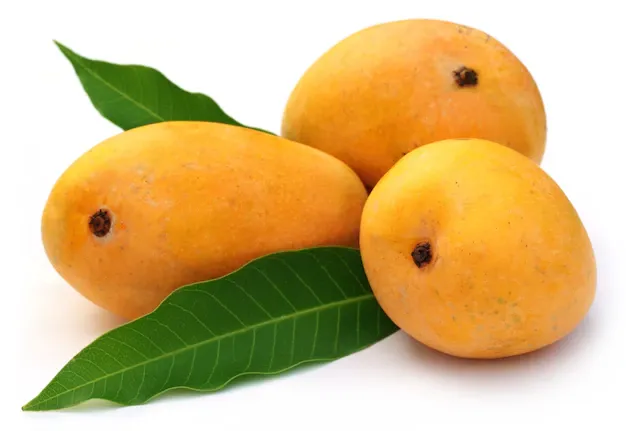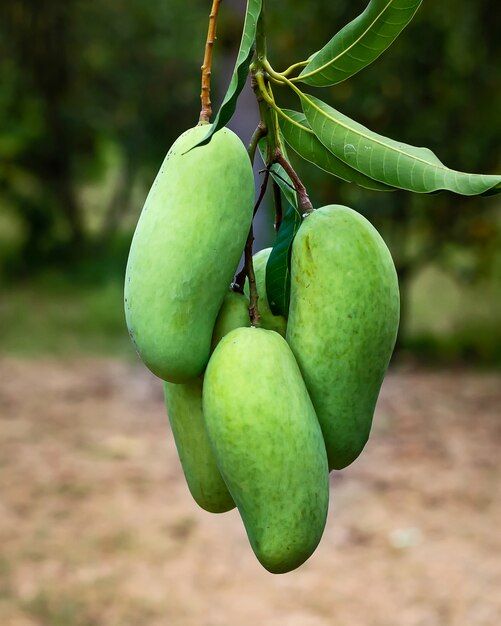Hello Everyone..
Mangoes are one of the most beloved fruits worldwide, appreciated for their sweet taste, vibrant color, and versatility in both culinary and medicinal uses. Originating in South Asia, the mango (Mangifera indica) has become an integral part of tropical and subtropical ecosystems across the globe. Growing mangoes is relatively simple once you understand the plant's requirements, and the rewards are sweet, both literally and nutritionally. This essay will explore how to grow mangoes, as well as the many benefits and vitamins associated with eating them.
Growing Mangoes
A. Choosing the Right Mango Variety
The first step in growing mangoes is selecting the appropriate variety for your climate. Mango trees thrive in warm, tropical to subtropical environments, with temperatures ranging from 70°F to 100°F (21°C to 38°C). They require a frost-free environment, as they are highly sensitive to cold. Some varieties are more suited to particular climates or soil types than others. Some common varieties include:
Haden: Popular in Florida and known for its large size and rich, sweet flavor.
Kent: A variety that produces juicy, fiberless fruit, often harvested late in the season.
Tommy Atkins: Known for its bright red skin and sturdy nature, making it ideal for shipping.
Alphonso: Revered for its smooth texture and high sweetness, commonly grown in India.
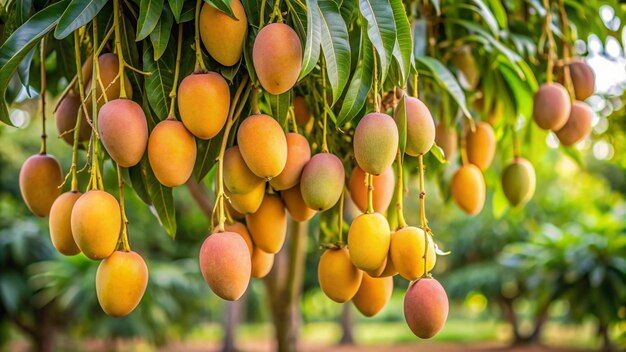
It is essential to select a variety that fits well with your region’s climate. If you live in an area that experiences a cold season, look for cold-hardy varieties. Many mango trees are also grafted to improve their quality, so research local grafted varieties to find the best one for your area.
B. Preparing the Site
Mango trees need full sunlight to thrive, so choose a spot in your yard that receives ample direct sunlight for at least 6-8 hours a day. The tree also needs well-drained soil, ideally sandy or loamy, with a pH of 5.5 to 7.5. Mangoes do not grow well in waterlogged conditions, so if your soil retains too much moisture, consider planting the tree on a raised mound or building a drainage system.
In addition to sunlight and soil, ensure that your chosen location has enough space for the tree to grow. Mango trees can grow quite large, often reaching heights of 30 to 40 feet, so it is important to give them adequate space from other plants, buildings, or structures. Allow at least 15 feet of space in every direction for the tree to mature.
C. Planting Mango Trees
When planting mango trees, it is best to do so during the warmer months to allow the tree to establish roots before the colder weather sets in. Start by digging a hole that is twice the width and depth of the tree’s root ball. If you are planting a seed, soak the seed for a few days, and once it has sprouted, plant it in the hole with its root facing down.
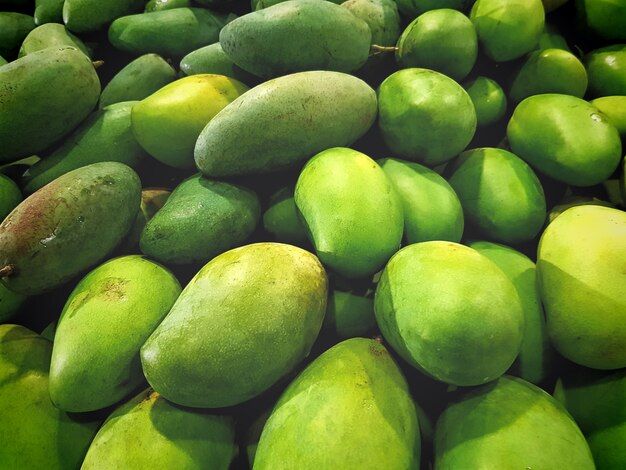
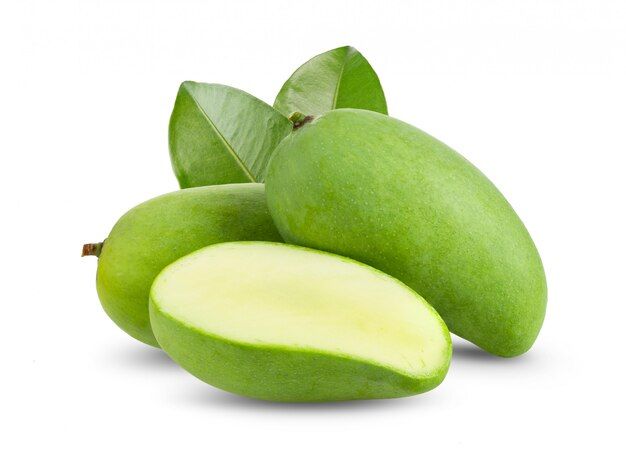
If you are planting a grafted mango tree, place the tree in the hole, ensuring that the graft union (the point where the tree was grafted onto a rootstock) is above the soil level. After placing the tree, backfill the hole with a mixture of soil and compost to provide the necessary nutrients. Water the tree well after planting, and apply mulch around the base to help retain moisture and protect the roots.
D. Watering and Fertilization
While mango trees are drought-tolerant once established, they need consistent watering when young to encourage root development. Water the tree regularly, but make sure not to overwater, as mangoes do not like standing water. Once the tree matures, it becomes more drought-resistant, and watering should be adjusted accordingly.
Fertilization is essential for optimal growth. Mango trees benefit from a balanced fertilizer containing nitrogen, phosphorus, and potassium. Apply the fertilizer during the growing season, typically in the spring and summer, when the tree is actively growing. Avoid fertilizing during the winter months when the tree is in a dormant phase.
E. Pruning Mango Trees
Pruning mango trees can help maintain their shape and encourage fruit production. Prune the tree regularly to remove dead or diseased branches, and trim any shoots that are growing too close to the main trunk. While mango trees don’t require heavy pruning, removing any obstructive or weak growth will ensure that the tree’s energy is directed toward producing healthy fruit.
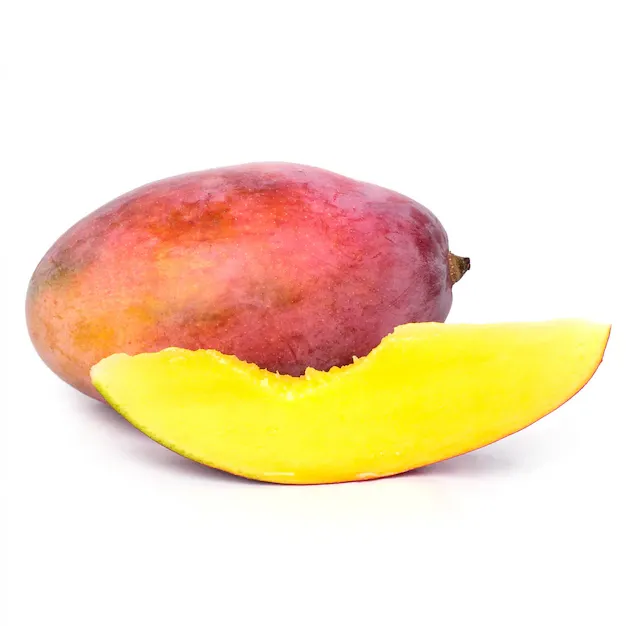
F. Harvesting Mangoes
Mangoes typically take 3-5 years to bear fruit, depending on whether the tree is grown from seed or grafted. The fruit matures during the warm months and will typically ripen within 3 to 4 months after flowering. The ideal time to harvest mangoes is when the fruit has a sweet fragrance and the skin color starts changing to a more vibrant hue, although this may vary depending on the variety. It is important to harvest the fruit before it becomes overripe to avoid attracting pests.
To harvest, gently twist the mango from the tree, leaving a small portion of the stem attached to avoid damaging the fruit. Mangoes can be eaten immediately or stored at room temperature until they ripen fully.
Benefits of Eating Mangoes
Mangoes are not only delicious but also packed with essential nutrients and health benefits. Here are some of the key reasons why eating mangoes is a great addition to your diet.
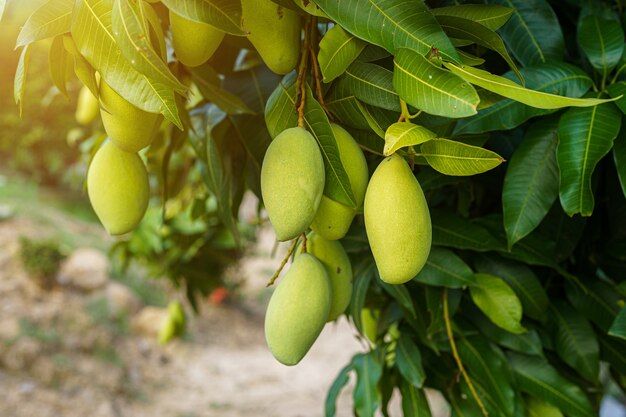

A. Rich in Vitamins
Mangoes are an excellent source of vitamins, particularly Vitamin C, Vitamin A, and Vitamin E. These vitamins play crucial roles in maintaining overall health:
Vitamin C: Mangoes are rich in Vitamin C, which supports the immune system, promotes collagen production for healthy skin, and helps the body absorb iron from plant-based foods.
Vitamin A: Mangoes contain high levels of Vitamin A, which is essential for eye health, supporting vision, and maintaining healthy skin and mucous membranes.
Vitamin E: Known for its antioxidant properties, Vitamin E found in mangoes helps protect cells from damage and supports skin health.
B. High in Antioxidants
Mangoes contain various antioxidants, including flavonoids, phenols, and beta-carotene. These antioxidants neutralize harmful free radicals in the body, which can help prevent chronic diseases such as cancer, heart disease, and diabetes. Mangoes have also been shown to improve the body’s ability to combat oxidative stress, thus helping to protect the body from aging and other health issues.
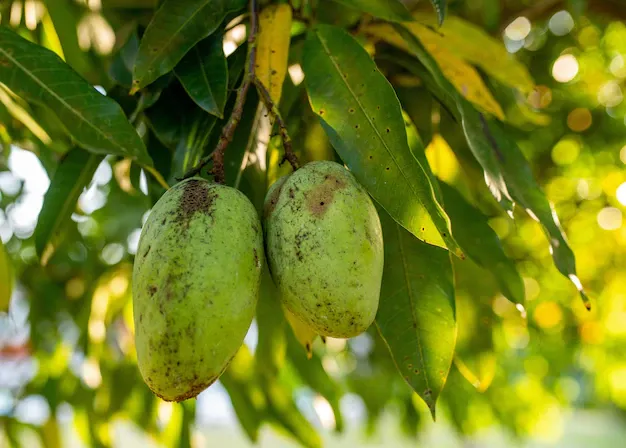
C. Promotes Digestive Health
Mangoes are a great source of dietary fiber, which is essential for healthy digestion. The fiber in mangoes helps to regulate bowel movements and prevent constipation. Additionally, mangoes contain an enzyme called amylase, which aids in the breakdown of complex carbohydrates and enhances digestion.
D. Supports Heart Health
The nutrients found in mangoes, including fiber, potassium, and antioxidants, contribute to heart health. The fiber helps lower cholesterol levels, while potassium helps regulate blood pressure, reducing the risk of heart disease. The antioxidants in mangoes also help reduce inflammation, which is a contributing factor to heart disease.
E. Supports Skin Health
The high levels of Vitamin A and Vitamin C in mangoes help maintain healthy skin. Vitamin A helps promote cell growth, while Vitamin C is essential for collagen production, which helps maintain skin elasticity and reduce the appearance of wrinkles. Eating mangoes can help give your skin a healthy glow and protect it from the harmful effects of sun exposure.


video credit Bestial helthe channel
Growing mangoes is a rewarding experience that requires attention to climate, soil, and care for the tree. By choosing the right variety and ensuring that the tree is planted in a suitable location, you can enjoy homegrown mangoes in just a few years. Beyond their delightful taste, mangoes are an incredibly nutritious fruit, packed with essential vitamins, antioxidants, and fiber that contribute to overall health. Whether eaten fresh, blended into smoothies, or incorporated into dishes, mangoes offer a delicious way to support your health and well-being.

